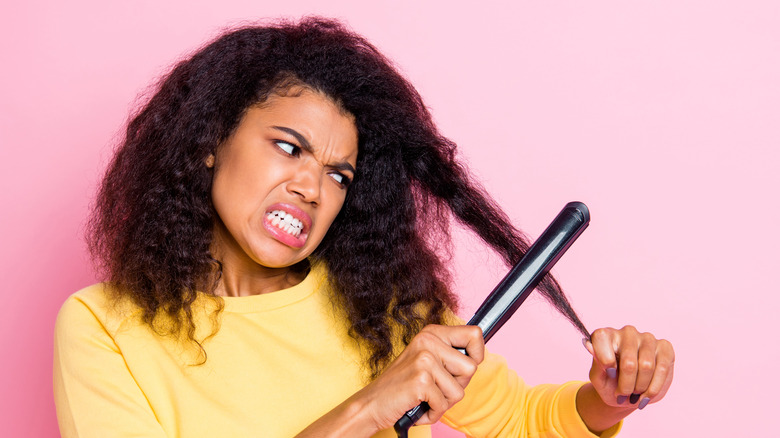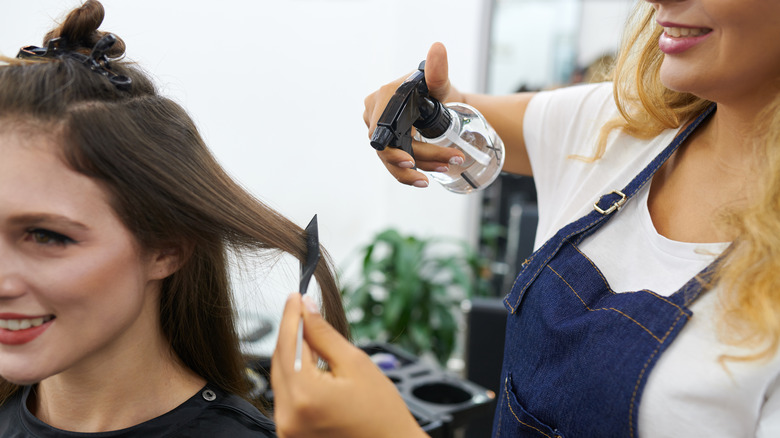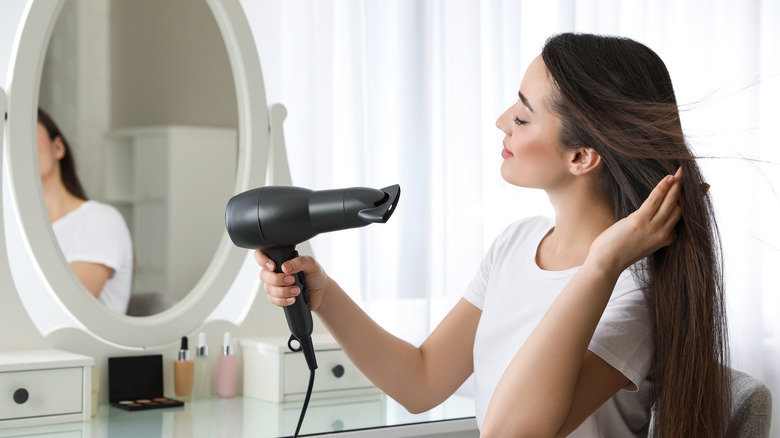Is A Heat Protectant Really Protecting Your Hair?
We may receive a commission on purchases made from links.
If you've ever been to a hair salon, you've probably had your hair stylist tell you at one point or another to lay off the heated tools. It's a well-known fact that applying too much heat on your hair is a recipe for damaged hair. Dyson explains that heat can alter the hair's keratin strands. This change in keratin strands leads to weaker hair that's exposed to even more damage. Once your hair's keratin has melted, this process cannot be reversed. This potential damage makes it even more important to protect your hair if you plan to use heat.
One common tip for avoiding heat damage on your hair is adding hair protectant before using any tool. As simple as it sounds, the idea is that by just adding in a heat protectant product to your hair, you can minimize some of the damage. However, it's important to question whether something as simple as spraying some product into your hair will really alleviate that damage. Because in the end, it's essential to take every precaution to avoid hair damage.
Does heat protectant actually work?
Heat protectant is an essential part of any hair routine. Hairstory explains that heat protectant products create a small coating around the hair that acts as a buffer for the heat. With this film, the heat conducts more slowly and is more evenly distributed throughout the hair. Therefore, any heat will cause less initial damage to the hair. This coating can also help retain the hair strands' moisture instead of losing it to heated hair tools.
All Things Hair adds that one of the ingredients commonly found in heat protectant products is silicone. Having silicone helps smoothen the surface of your hair, giving you those shiny and glossy strands after you use heated tools. Using heat protectant spray before heated tools also prevents your hair from creating frizziness or dullness. While heat protectant is essential to help protect your hair and it does work, it's not going to completely save your hair from damage. Even the best heat protectants will only defend against up to 50% of damage.
How to fully protect your hair against heat
Although heat protectant spray is a great step in avoiding damage to your hair, there are plenty of other steps you can take to add another layer of protection. Dermstore explains that lowering the temperatures on your products is a key step to avoiding hair damage. If you are planning to use a heated tool, try sticking to around 150 to 200 degrees Fahrenheit to avoid any significant heat. You should also plan to add hair masks to your weekly routine as these products will help add more moisture and protect your hair against outside triggers.
Even though it will take a bit longer, Silk Up recommends trying to air dry more often. Remember, it is possible to get voluminous hair without heat! You never want to use heat on damp hair, so avoiding the hair dryer will help prevent some of this unnecessary damage. Letting your hair air dry until it is significantly dry will prevent you from using heat on vulnerable hair. If you are using heated tools, try to not keep the dryer or iron stuck in one place. Avoid having it sit on one section of hair as this is only going to cause significant damage to this one section. Instead, keep the tool moving for a better distribution of heat.


